Country
Crash of a Convair CV-580 in Kasba Lake
Date & Time:
Aug 3, 2011 at 1100 LT
Registration:
C-GKFP
Survivors:
Yes
Schedule:
Winnipeg – Kasba Lake
MSN:
446
YOM:
1956
Crew on board:
0
Crew fatalities:
Pax on board:
0
Pax fatalities:
Other fatalities:
Total fatalities:
0
Circumstances:
Following an uneventful flight from Winnipeg, the crew completed the landing on runway 02/20, a 1,876 metres long clay/gravel runway. During the landing roll, the nose gear collapsed. The aircraft slid on its nose for few dozen metres before coming to rest. All occupants evacuated safely and the aircraft was damaged beyond repair. At the time of the accident, the runway surface was irregular with potholes and water gouges due to the recent rains.

Ground accident of a Convair CV-580F in Seattle
Date & Time:
Mar 20, 2011 at 0900 LT
Registration:
C-GNRL
Survivors:
Yes
Schedule:
Seattle - Calgary
MSN:
375
YOM:
1956
Flight number:
NRL920
Crew on board:
2
Crew fatalities:
Pax on board:
0
Pax fatalities:
Other fatalities:
Total fatalities:
0
Circumstances:
The crew was preparing the aircraft to perform a cargo flight to Calgary (flight NRL920). While taxiing, the aircraft went out of control, collided with a parked Ameriflight Piper PA-31 before coming to rest against a metallic fence. Both pilots were uninjured while the aircraft was damaged beyond repair.
Probable cause:
The NTSB confirmed that no investigation have been conducted about this incident. Thus, the cause remains unknown.

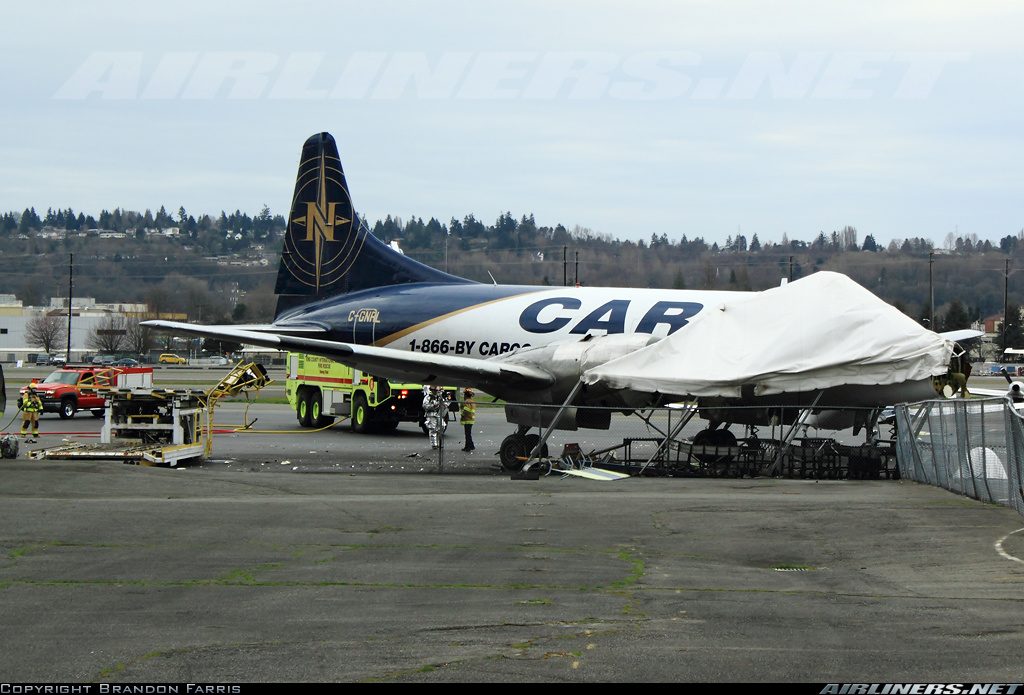
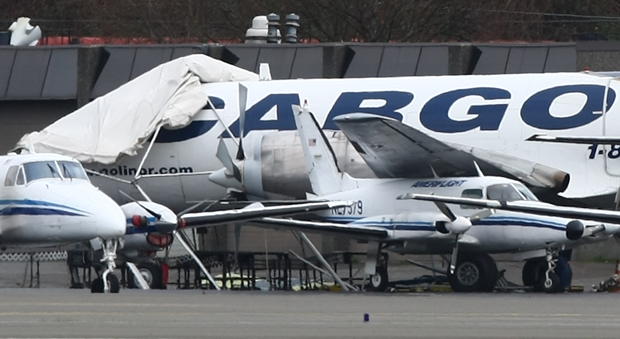

Crash of a Convair CV-580 near Lytton: 2 killed
Date & Time:
Jul 31, 2010 at 2024 LT
Registration:
C-FKFY
Survivors:
No
Schedule:
Kamloops - Kamloops
MSN:
129
YOM:
1953
Flight number:
Tanker448
Crew on board:
2
Crew fatalities:
Pax on board:
0
Pax fatalities:
Other fatalities:
Total fatalities:
2
Captain / Total hours on type:
900.00
Copilot / Total hours on type:
34
Circumstances:
Crew was fighting a forest fire near Siwash Road, about 15 km south of Lytton. The bombing run required crossing the edge of a ravine in the side of the Fraser River canyon before descending on the fire located in the ravine. About 22 minutes after departure, Tanker 448 approached the ravine and struck trees. An unanticipated retardant drop occurred coincident with the tree strikes. Seconds later, Tanker 448 entered a left-hand spin and collided with terrain. A post-impact explosion and fire consumed much of the wreckage. A signal was not received from the on-board emergency locator transmitter; nor was it recovered. Both crew members were fatally injured.
Probable cause:
Findings as to Causes and Contributing Factors:
1. It could not be determined to what extent the initial collision with trees caused damage to the aircraft which may have affected its controllability.
2. Visual illusion may have precluded recognition, or an accurate assessment, of the flight path profile in sufficient time to avoid the trees on rising terrain.
3. Visual illusion may have contributed to the development of a low energy condition which impaired the aircraft performance when overshoot action was initiated.
4. The aircraft entered an aerodynamic stall and spin from which recovery was not possible at such a low altitude.
Findings as to Risk:
1. Visual illusions give false impressions or misconceptions of actual conditions. Unrecognized and uncorrected spatial disorientation, caused by illusions, carries a high risk of incident or accident.
2. Flight operations outside the approved weight and balance envelope increase the risk of unanticipated aircraft behaviour.
3. The recommended maintenance check of the emergency drop (E-drop) system may not be performed and there is no requirement for flight crews to test the E-drop system, thereby increasing the risk that an unserviceable system will go undetected.
4. The location of the E-drop selector requires crews to divert significant time and attention to identify and confirm the correct switch before operating it. This increases the risk of collision with terrain while attention is distracted.
5. The location of the angle-of-attack indicator on the instrument panel makes it difficult to see from the right seat, reducing its effectiveness.
6. When cockpit recordings are not available to an investigation, this may preclude the identification and communication of safety deficiencies to advance transportation safety.
1. It could not be determined to what extent the initial collision with trees caused damage to the aircraft which may have affected its controllability.
2. Visual illusion may have precluded recognition, or an accurate assessment, of the flight path profile in sufficient time to avoid the trees on rising terrain.
3. Visual illusion may have contributed to the development of a low energy condition which impaired the aircraft performance when overshoot action was initiated.
4. The aircraft entered an aerodynamic stall and spin from which recovery was not possible at such a low altitude.
Findings as to Risk:
1. Visual illusions give false impressions or misconceptions of actual conditions. Unrecognized and uncorrected spatial disorientation, caused by illusions, carries a high risk of incident or accident.
2. Flight operations outside the approved weight and balance envelope increase the risk of unanticipated aircraft behaviour.
3. The recommended maintenance check of the emergency drop (E-drop) system may not be performed and there is no requirement for flight crews to test the E-drop system, thereby increasing the risk that an unserviceable system will go undetected.
4. The location of the E-drop selector requires crews to divert significant time and attention to identify and confirm the correct switch before operating it. This increases the risk of collision with terrain while attention is distracted.
5. The location of the angle-of-attack indicator on the instrument panel makes it difficult to see from the right seat, reducing its effectiveness.
6. When cockpit recordings are not available to an investigation, this may preclude the identification and communication of safety deficiencies to advance transportation safety.
Final Report:
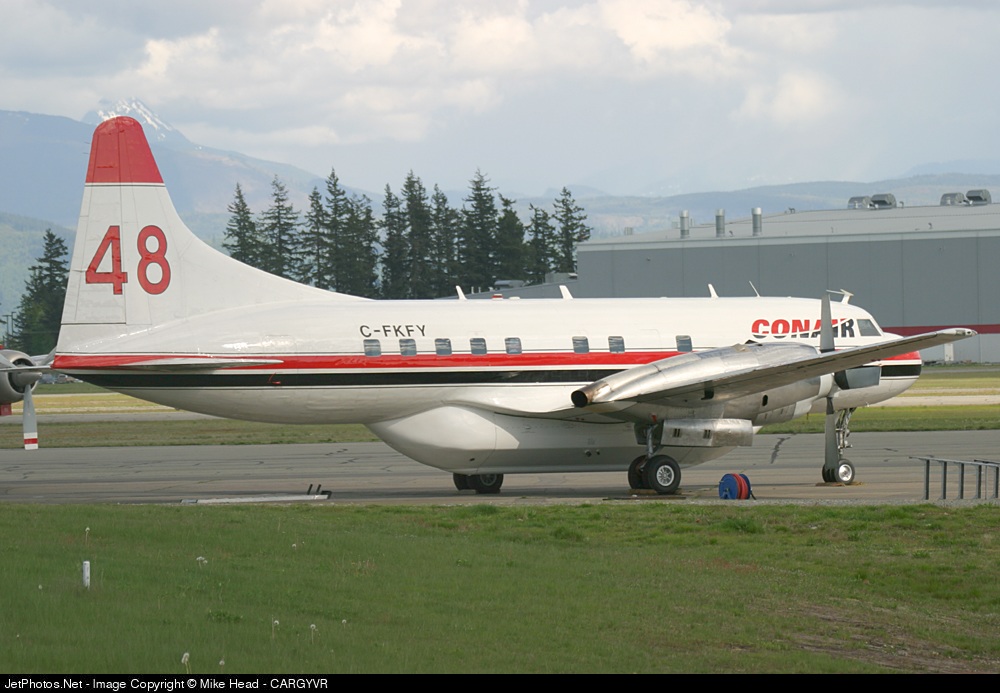

Crash of a Convair CV-580 in Columbus: 3 killed
Date & Time:
Sep 1, 2008 at 1206 LT
Registration:
N587X
Survivors:
No
Schedule:
Columbus - Mansfield
MSN:
361
YOM:
1956
Flight number:
HMA587
Crew on board:
3
Crew fatalities:
Pax on board:
0
Pax fatalities:
Other fatalities:
Total fatalities:
3
Aircraft flight hours:
71965
Circumstances:
The accident flight was the first flight following maintenance that included flight control cable rigging. The flight was also intended to provide cockpit familiarization for the first officer and the pilot observer, and as a training flight for the first officer. About one minute after takeoff, the first officer contacted the tower and stated that they needed to return to land. The airplane impacted a cornfield about one mile southwest of the approach end of the runway, and 2 minutes 40 seconds after the initiation of the takeoff roll. The cockpit voice recorder (CVR) indicated that, during the flight, neither the captain nor the first officer called for the landing gear to be raised, the flaps to be retracted, or the power levers to be reduced from full power. From the time the first officer called "rotate" until the impact, the captain repeated the word "pull" about 27 times. When the observer pilot asked, "Come back on the trim?" the captain responded, "There's nothing anymore on the trim." The inspection of the airplane revealed that the elevator trim cables were rigged improperly, which resulted in the trim cables being reversed. As a result, when the pilot applied nose-up trim, the elevator trim system actually applied nose-down trim. The flight crew was briefed on the maintenance work that had been performed on the airplane; therefore, when the captain’s nose-up trim inputs were affecting his ability to control the airplane, at a minimum, he should have stopped making additional inputs and returned the airplane to the configuration it was in before the problem worsened. An examination of the maintenance instruction cards used to conduct the last inspection revealed that the inspector's block on numerous checks were not signed off by the Required Inspection Item (RII) inspector. The RII inspector did not sign the item that stated: "Connect elevator servo trim tab cables and rig in accordance with Allison Convair [maintenance manual]...” The item had been signed off by the mechanic, but not by the RII inspector. The card also contained a NOTE, which stated in bold type, "A complete inspection of all elevator controls must be accomplished and signed off by an RII qualified inspector and a logbook entry made to this effect." The RII inspector block was not signed off.
Probable cause:
The improper (reverse) rigging of the elevator trim cables by company maintenance personnel, and their subsequent failure to discover the misrigging during required post-maintenance checks. Contributing to the accident was the captain’s inadequate post-maintenance preflight check and the flight crew’s improper response to the trim problem.
Final Report:
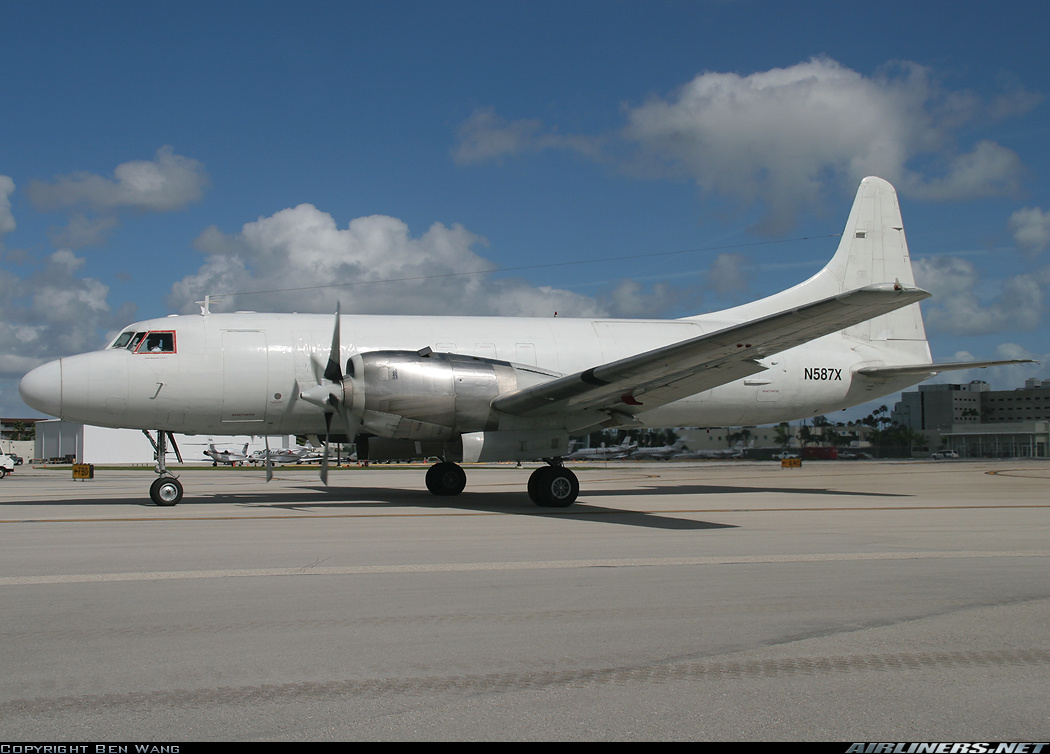
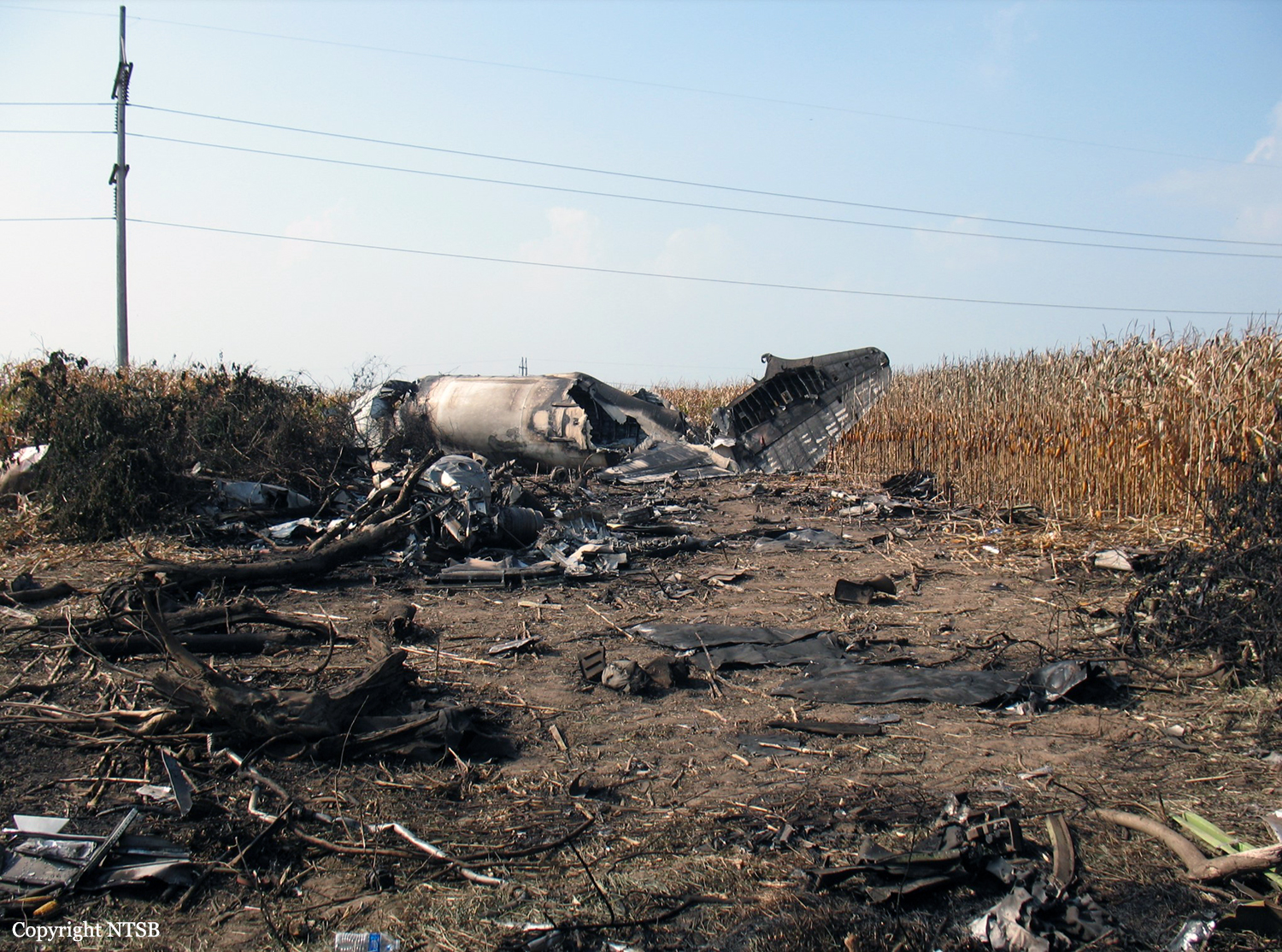
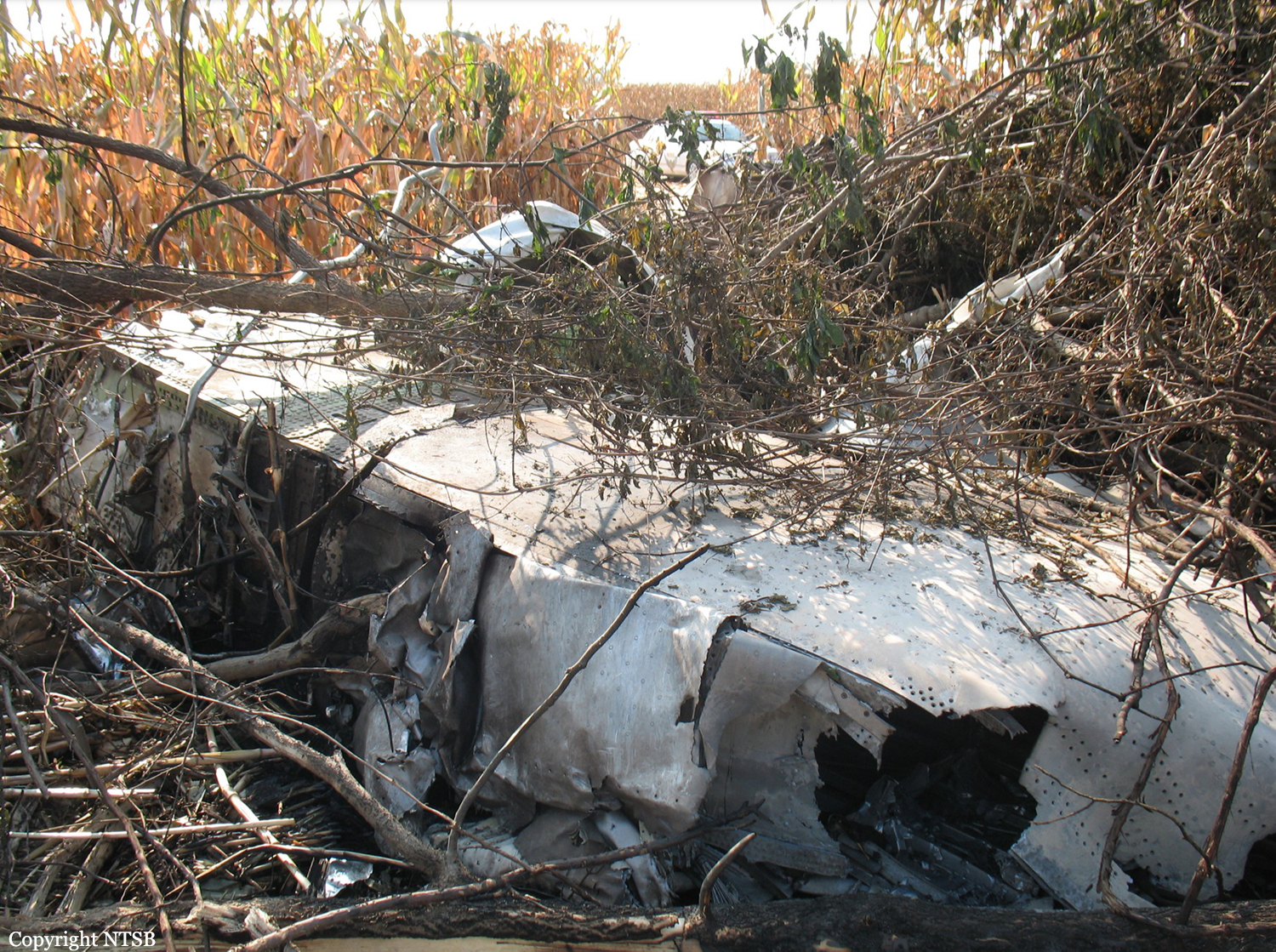

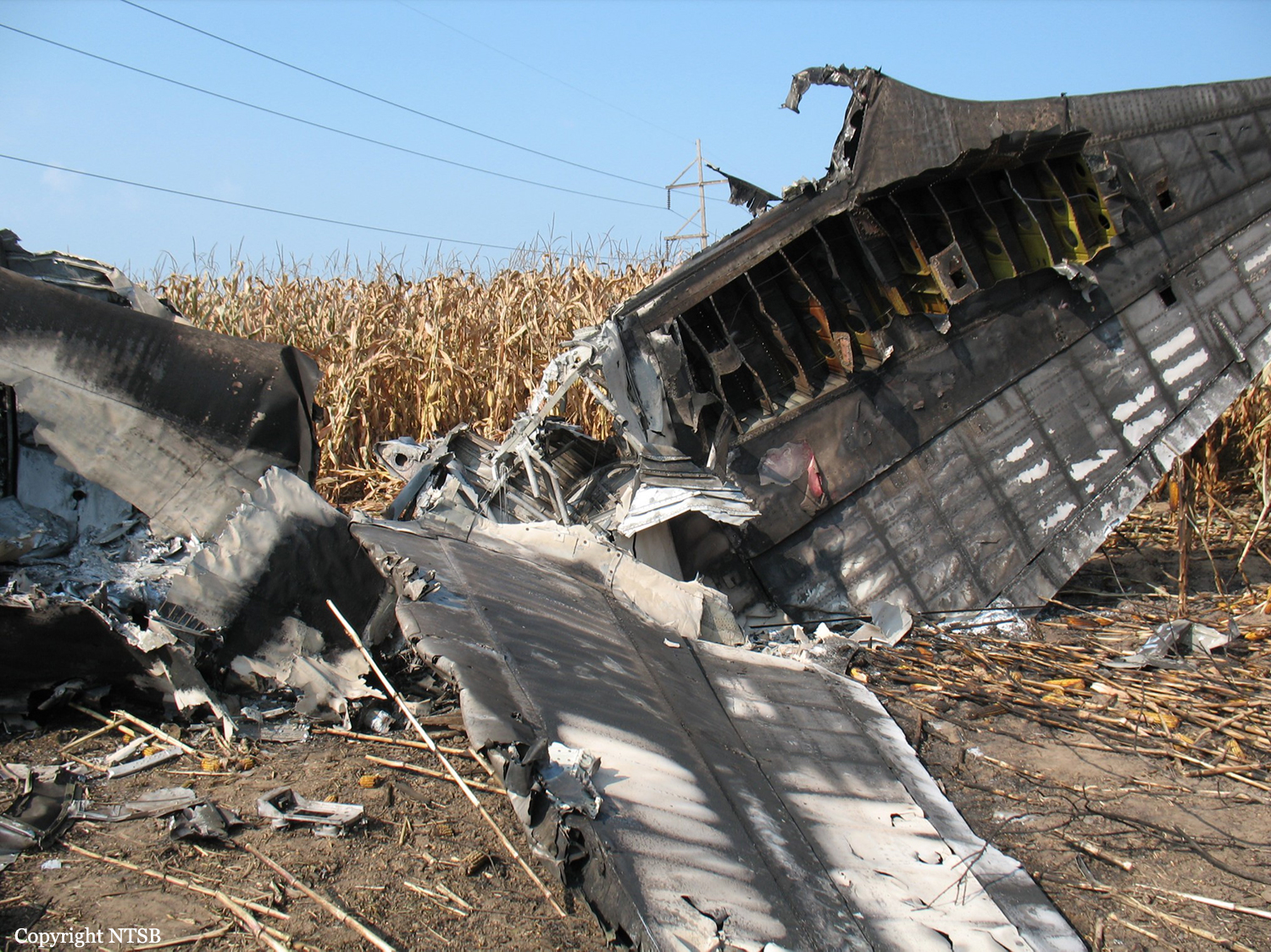
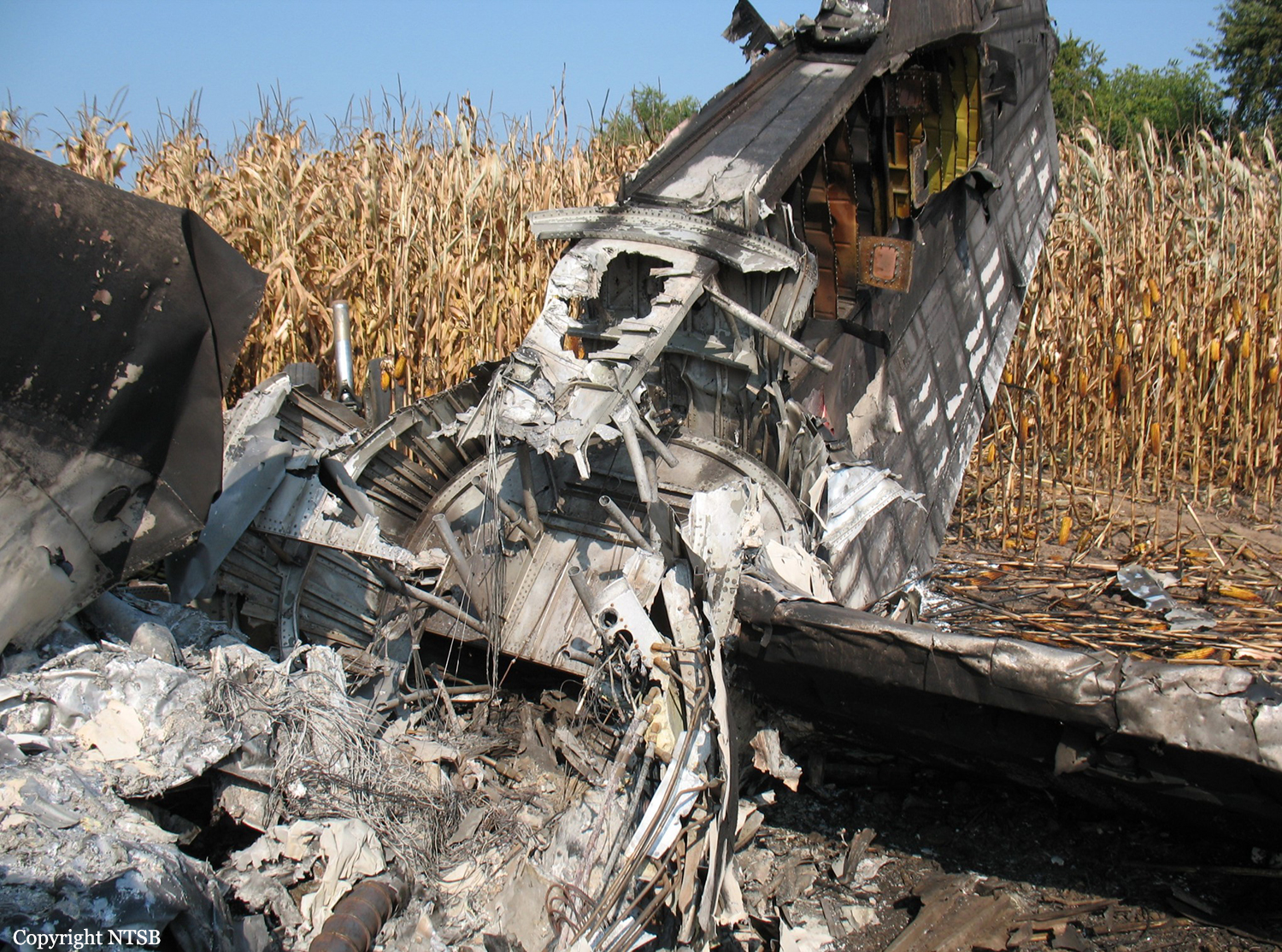
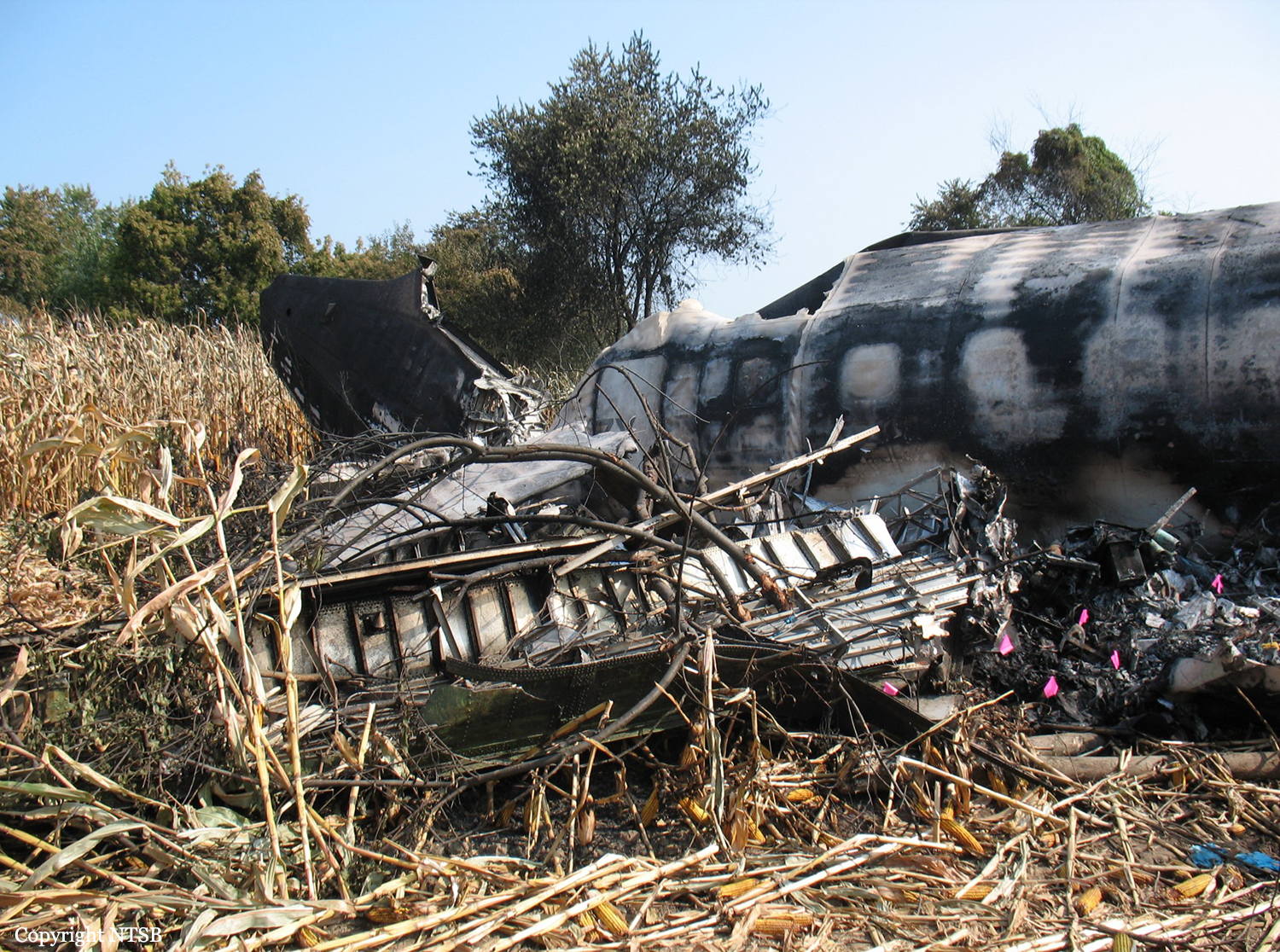
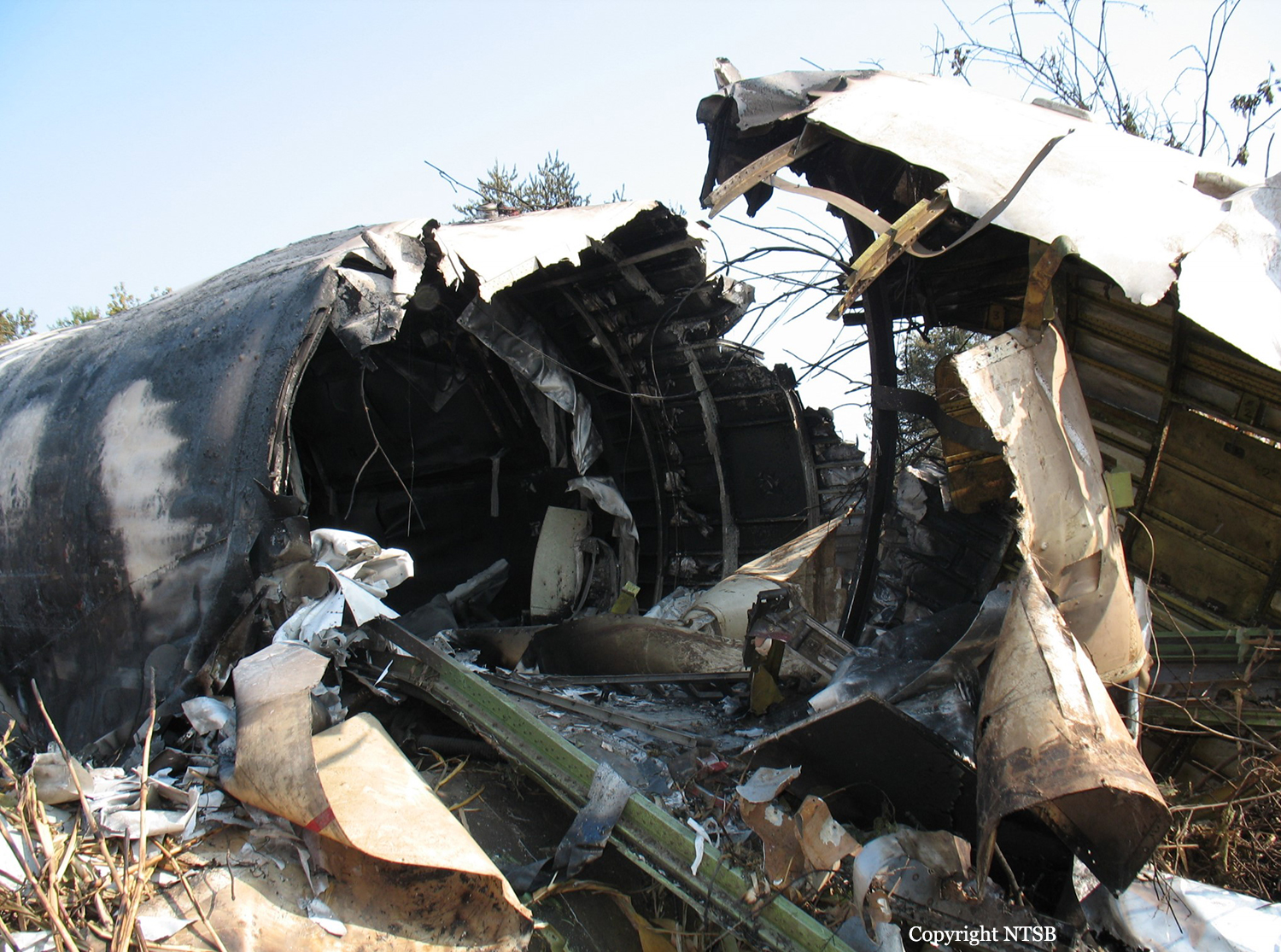

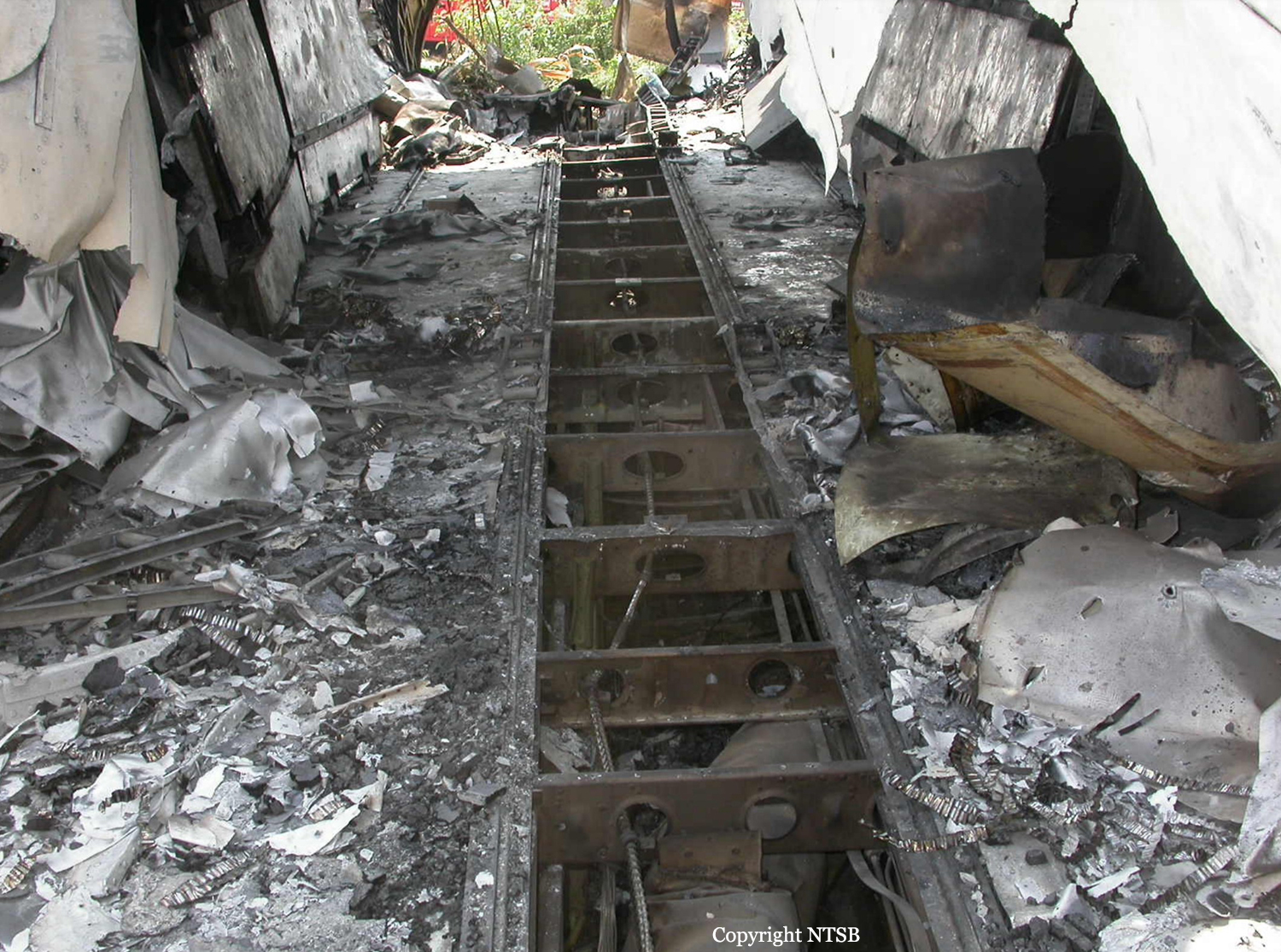
Crash of a Convair CV-580 in La Ronge: 1 killed
Date & Time:
May 14, 2006 at 1245 LT
Registration:
C-GSKJ
Survivors:
Yes
Schedule:
La Ronge - La Ronge
MSN:
202
YOM:
1954
Flight number:
TKR472
Crew on board:
3
Crew fatalities:
Pax on board:
0
Pax fatalities:
Other fatalities:
Total fatalities:
1
Captain / Total hours on type:
750.00
Copilot / Total hours on type:
25
Circumstances:
The aircraft was conducting stop-and-go landings on Runway 36 at the airport in La Ronge, Saskatchewan. On short final approach for the third landing, the aircraft developed a high sink rate, nearly striking the ground short of the runway. As the crew applied power to arrest the descent, the autofeather system feathered the left propeller and shut down the left engine. On touchdown, the aircraft bounced, the landing was rejected, and a go-around was attempted, but the aircraft did not attain the airspeed required to climb or maintain directional control. The aircraft subsequently entered a descending left-hand turn and crashed into a wooded area approximately one mile northwest of the airport. The first officer was killed and two other crew members sustained serious injuries. The aircraft sustained substantial damage. The accident occurred during daylight hours at 1245 central standard time.
Probable cause:
Findings as to Causes and Contributing Factors:
1. The flight crew attempted a low-energy go-around after briefly touching down on the runway. The aircraft’s low-energy state contributed to its inability to accelerate to the airspeed required to accomplish a successful go-around procedure.
2. The rapid power lever advancement caused an inadvertent shutdown of the left engine, which exacerbated the aircraft’s low-energy status and contributed to the eventual loss of control.
3. The inadvertent activation of the autofeather system contributed to the crew’s loss of situational awareness, which adversely influenced the decision to go around, at a time when it may have been possible for the aircraft to safely stop and remain on the runway.
4. The shortage and ambiguity of information available on rejected landings contributed to confusion between the pilots, which resulted in a delayed retraction of the flaps. This departure from procedure prevented the aircraft from accelerating adequately.
5. Retarding the power levers after the first officer had exceeded maximum power setting resulted in an inadequate power setting on the right engine and contributed to a breakdown of crew coordination. This prevented the crew from effectively identifying and responding to the emergencies they encountered.
Findings as to Risk:
1. The design of the autofeather system is such that, when armed, the risk of an inadvertent engine shutdown is increased.
2. Rapid power movement may increase the risk of inadvertent activation of the negative torque sensing system during critical flight regimes.
Other Findings:
1. There were inconsistencies between sections of the Conair aircraft operating manual (AOM), the standard operating procedures (SOPs), and the copied AOM that the operator possessed. These inconsistencies likely created confusion between the training captain and the operator’s pilots.
2. The operator’s CV-580A checklists do not contain a specified section for circuit training. The lack of such checklist information likely increased pilot workload.
1. The flight crew attempted a low-energy go-around after briefly touching down on the runway. The aircraft’s low-energy state contributed to its inability to accelerate to the airspeed required to accomplish a successful go-around procedure.
2. The rapid power lever advancement caused an inadvertent shutdown of the left engine, which exacerbated the aircraft’s low-energy status and contributed to the eventual loss of control.
3. The inadvertent activation of the autofeather system contributed to the crew’s loss of situational awareness, which adversely influenced the decision to go around, at a time when it may have been possible for the aircraft to safely stop and remain on the runway.
4. The shortage and ambiguity of information available on rejected landings contributed to confusion between the pilots, which resulted in a delayed retraction of the flaps. This departure from procedure prevented the aircraft from accelerating adequately.
5. Retarding the power levers after the first officer had exceeded maximum power setting resulted in an inadequate power setting on the right engine and contributed to a breakdown of crew coordination. This prevented the crew from effectively identifying and responding to the emergencies they encountered.
Findings as to Risk:
1. The design of the autofeather system is such that, when armed, the risk of an inadvertent engine shutdown is increased.
2. Rapid power movement may increase the risk of inadvertent activation of the negative torque sensing system during critical flight regimes.
Other Findings:
1. There were inconsistencies between sections of the Conair aircraft operating manual (AOM), the standard operating procedures (SOPs), and the copied AOM that the operator possessed. These inconsistencies likely created confusion between the training captain and the operator’s pilots.
2. The operator’s CV-580A checklists do not contain a specified section for circuit training. The lack of such checklist information likely increased pilot workload.
Final Report:
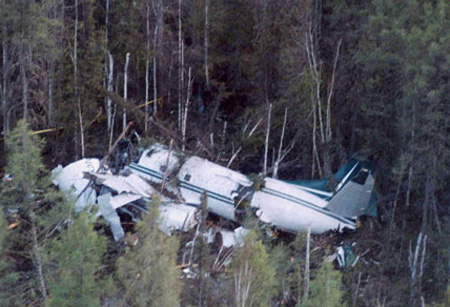
Crash of a Convair CV-580F in Amisi: 8 killed
Date & Time:
Apr 27, 2006 at 1100 LT
Registration:
ZS-SKH
Survivors:
No
Schedule:
Goma – Amisi
MSN:
147
YOM:
1954
Crew on board:
3
Crew fatalities:
Pax on board:
5
Pax fatalities:
Other fatalities:
Total fatalities:
8
Circumstances:
The aircraft departed Goma at 0930LT on a cargo flight to Amisi, carrying five passengers, three crew members and a load consisting of telecommunication equipments. On approach to Amisi Airport, the aircraft crashed in unknown circumstances, killing all eight occupants.

Crash of a Convair CV-580 in Trinidad
Date & Time:
Feb 22, 2005 at 2026 LT
Registration:
FAB-73
Survivors:
Yes
Schedule:
Trinidad – Cochabamba
MSN:
170
YOM:
1954
Crew on board:
4
Crew fatalities:
Pax on board:
45
Pax fatalities:
Other fatalities:
Total fatalities:
0
Circumstances:
Shortly after takeoff, while initial climb, the crew encountered engine problems and elected to make an emergency landing. The aircraft crash landed in a muddy field and came to rest, broken in two. 28 people were injured while 21 others escaped uninjured.






